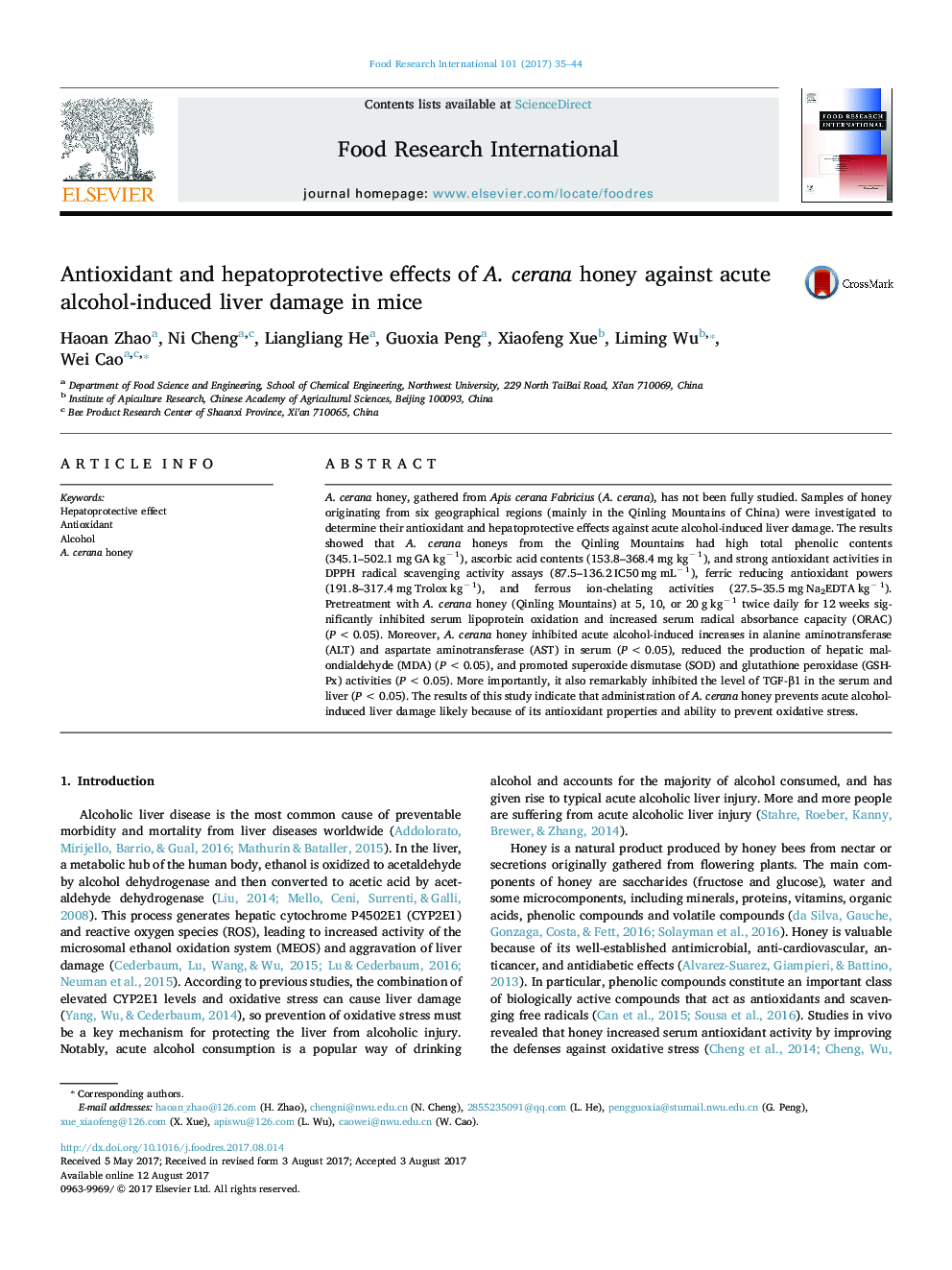| Article ID | Journal | Published Year | Pages | File Type |
|---|---|---|---|---|
| 5767790 | Food Research International | 2017 | 10 Pages |
â¢Physicochemical properties of A. cerana honey was reported for the first time;â¢cerana honey has good antioxidant activity in vitro;â¢cerana honey improved antioxidant capacity in serum;â¢Pretreatment with A. cerana honey could prevent acute alcohol-induced liver damage;â¢More importantly, administration of A. cerana honey remarkably inhibited the expression of TGF-β1.
A. cerana honey, gathered from Apis cerana Fabricius (A. cerana), has not been fully studied. Samples of honey originating from six geographical regions (mainly in the Qinling Mountains of China) were investigated to determine their antioxidant and hepatoprotective effects against acute alcohol-induced liver damage. The results showed that A. cerana honeys from the Qinling Mountains had high total phenolic contents (345.1-502.1 mg GA kgâ 1), ascorbic acid contents (153.8-368.4 mg kgâ 1), and strong antioxidant activities in DPPH radical scavenging activity assays (87.5-136.2 IC50 mg mLâ 1), ferric reducing antioxidant powers (191.8-317.4 mg Trolox kgâ 1), and ferrous ion-chelating activities (27.5-35.5 mg Na2EDTA kgâ 1). Pretreatment with A. cerana honey (Qinling Mountains) at 5, 10, or 20 g kgâ 1 twice daily for 12 weeks significantly inhibited serum lipoprotein oxidation and increased serum radical absorbance capacity (ORAC) (P < 0.05). Moreover, A. cerana honey inhibited acute alcohol-induced increases in alanine aminotransferase (ALT) and aspartate aminotransferase (AST) in serum (P < 0.05), reduced the production of hepatic malondialdehyde (MDA) (P < 0.05), and promoted superoxide dismutase (SOD) and glutathione peroxidase (GSH-Px) activities (P < 0.05). More importantly, it also remarkably inhibited the level of TGF-β1 in the serum and liver (P < 0.05). The results of this study indicate that administration of A. cerana honey prevents acute alcohol-induced liver damage likely because of its antioxidant properties and ability to prevent oxidative stress.
Graphical abstractDownload high-res image (163KB)Download full-size image
